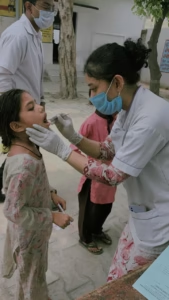🌱 Comprehensive Question Set on ICSE Class 9 Seeds – Structure and Germination
Explore an engaging and detailed question set on ICSE Class 9 Seeds – Structure and Germination. Includes multiple-choice, short answer, long answer, and diagram-based questions with emojis for easy understanding.
🌱 Comprehensive Question Set on ICSE Class 9 Seeds – Structure and Germination
🌿 True or False
- 🌿 Plumule is the future root and radicle is the future shoot of the plant.
- 🌾 Micropyle serves for the emergence of the radicle.
- 🪸 Cotyledons in castor are a big store of food for the embryo.
- 🌽 Maize grain has a large endosperm.
- 🛡️ Tegmen is the outermost layer of the seed.
🌿 Fill in the Blanks
- In a dry seed, the embryo is in __________ state. (active/quiescent)
- Water is absorbed by the seed mainly through __________. (entire surface/micropyle)
- Very low temperature __________ the growth of the embryo. (inhibits/destroys)
- Germination in Pea is __________. (epigeal/hypogeal)
- Coleoptile is a part found in the germinating __________. (castor/maize)
- Alkaline pyrogallic acid is used for absorbing __________ during experiments on germination. (oxygen/carbon dioxide)
🌿 Multiple Choice Questions
- Which one of the following plant parts is correctly matched with one of its stated characteristics?
- a) Mango seed → aleurone layer
- b) Bean seed → endosperm
- c) Maize grain → coleoptile
- d) Wheat grain → exalbuminous
- Seeds sown very deep in the soil fail to germinate because they:
- a) lack sufficient strength to break through the upper soil layers.
- b) do not get enough sunlight.
- c) get too much water.
- d) do not get enough oxygen.
- Fruit is a ripened:
- a) Ovary
- b) Embryo
- c) Ovule
- d) Zygote
- Which of the following is the largest seed?
- a) Watermelon
- b) Pumpkin
- c) Double coconut
- d) Mango
- The distinct whitish oval scar on the concave side of the seed is termed as:
- a) Scutellum
- b) Micropyle
- c) Hilum
- d) Germpore
- The single cotyledon of a maize grain is called:
- a) Hypocotyl
- b) Scutellum
- c) Coleorhiza
- d) Embryo
- The outermost hard brownish layer of the seed coat is:
- a) Testa
- b) Tegmen
- c) Epicotyl
- d) Aleurone layer
- The part of an embryo which develops into root is:
- a) Coleorhiza
- b) Plumule
- c) Coleoptile
- d) Radicle
- Which of the following statements is correct regarding a maize grain?
- a) A maize grain is a matured ovary that encloses a single seed.
- b) The seed coat and fruit wall are merged into one structure.
- c) The outer layer of the endosperm is abundant in protein.
- d) All of the above.
🔍 Very Short Answer Type
- Correct the false statement by altering the first or last word only:
(a) Plumule develops into the root system.
(b) The testa is the delicate inner layer of a seed’s outer covering.
(c) Endothelium The endothelium in maize grain acts as a boundary between the endosperm and the embryo.
(d) Hypocotyl elongates faster in hypogeal germination.
(e) Germination marks a dormant phase in the life of a seed. - Name the following:
(a) A monocotyledonous endospermic seed.
(b) A chemical substance used in experiments to eliminate oxygen . (c) The segment of the plumule located above the seed’s embryonic axis.
(d) A plant which shows viviparous germination.
(e) The maize endosperm’s outer layer is rich in protein.
(f) A seed with folded plumule leaves. - Fill in the blanks:
(a) In bean seeds, the __________ grows more rapidly, causing the seeds to emerge __________ the soil (b) The __________ acts as a shield for the radicle, while the __________ safeguards the curled plumule.
(c) A seed is enclosed and protected by __________ and __________.
(d) Seeds intake water through the __________, which also aids in the diffusion of gases required for respiration.
(e) Crops like rice, wheat, and maize are abundant in __________ nutrients.
📝 Short Answer Type
- Define the following terms: Seed, Fruits, Grain, Dormancy, Germination.
- What is the difference between an embryo and a seed?
- Why are germinated grams considered highly nutritive?
- Why don’t we use the terms maize fruit and maize seed?
📚 Long Answer Type
- Distinguish between:
(a) Monocotyledonous and Dicotyledonous seeds
(b) Epicotyl and Hypocotyl
(c) Epigeal and Hypogeal germination
(d) Radicle and Plumule
(e) Albuminous and Exalbuminous seeds - What are the functions of: Seed coat, Micropyle, Cotyledons, Radicle, Plumule?
- Suggest an experiment to prove that a suitable temperature is necessary for germination.
- Is sprouting in potatoes germination? Why or why not?
- Differences between:
(a) Coleorhiza and coleoptile
(b) Bean seed and maize grain
(c) Germination and vivipary - Why is maize grain called a ‘one seeded fruit’?
- Role of hypocotyl in epigeal germination.
🎨 Diagrams
- Draw and label:
(a) Twig of viviparous plant with germination
(b) Seedling growing in soil - Draw and explain: Experimental set-up of three-bean seed experiment and its conditions for germination.





